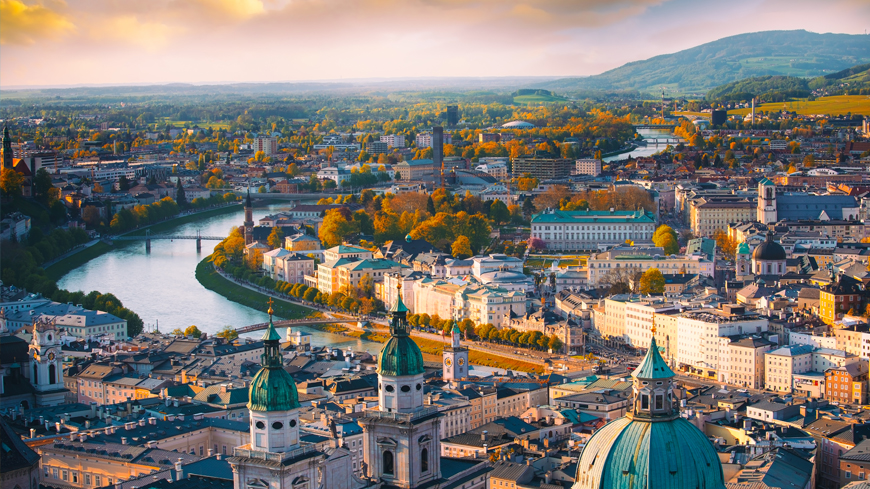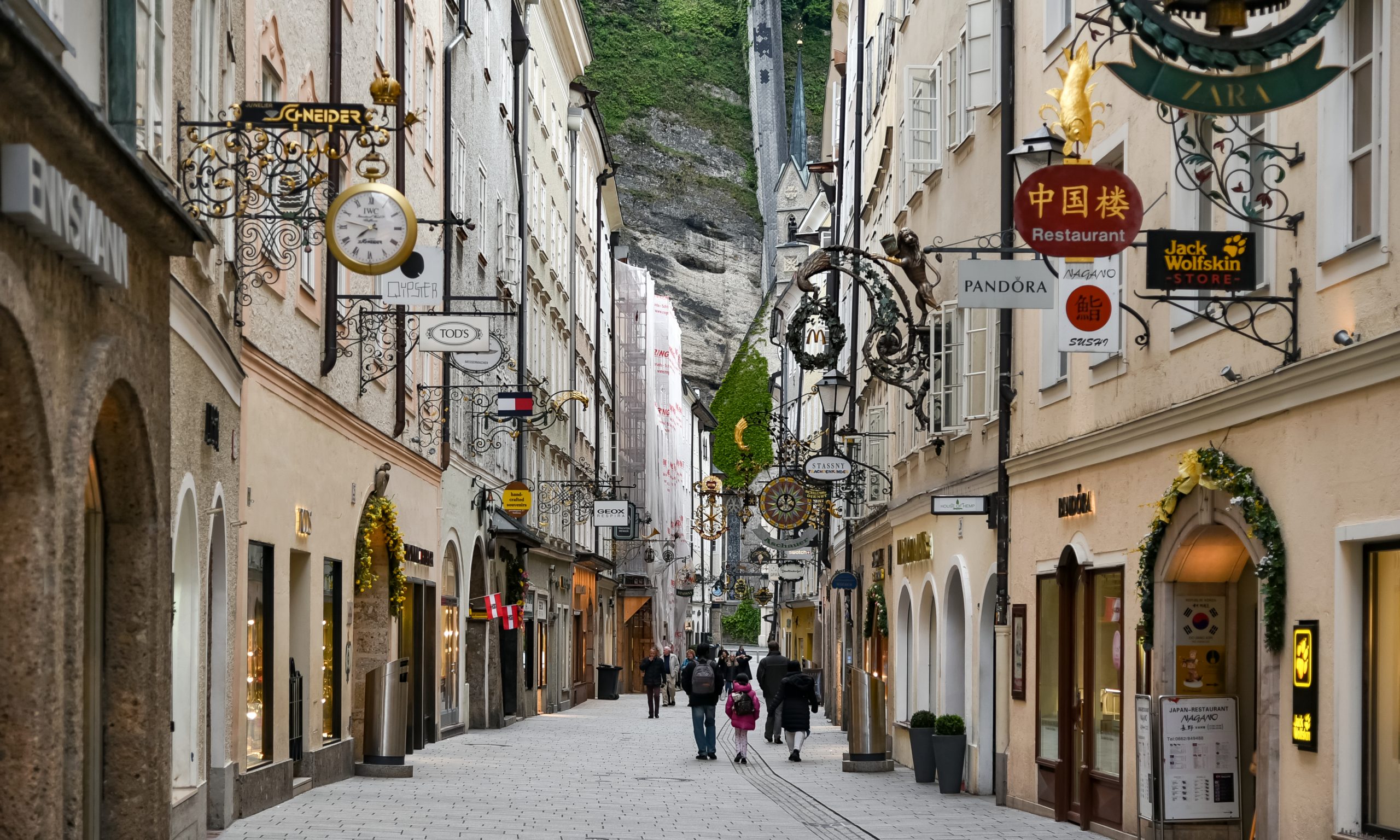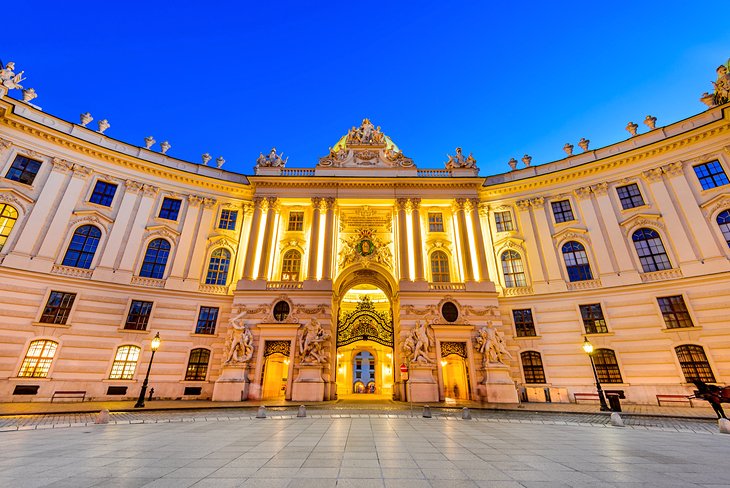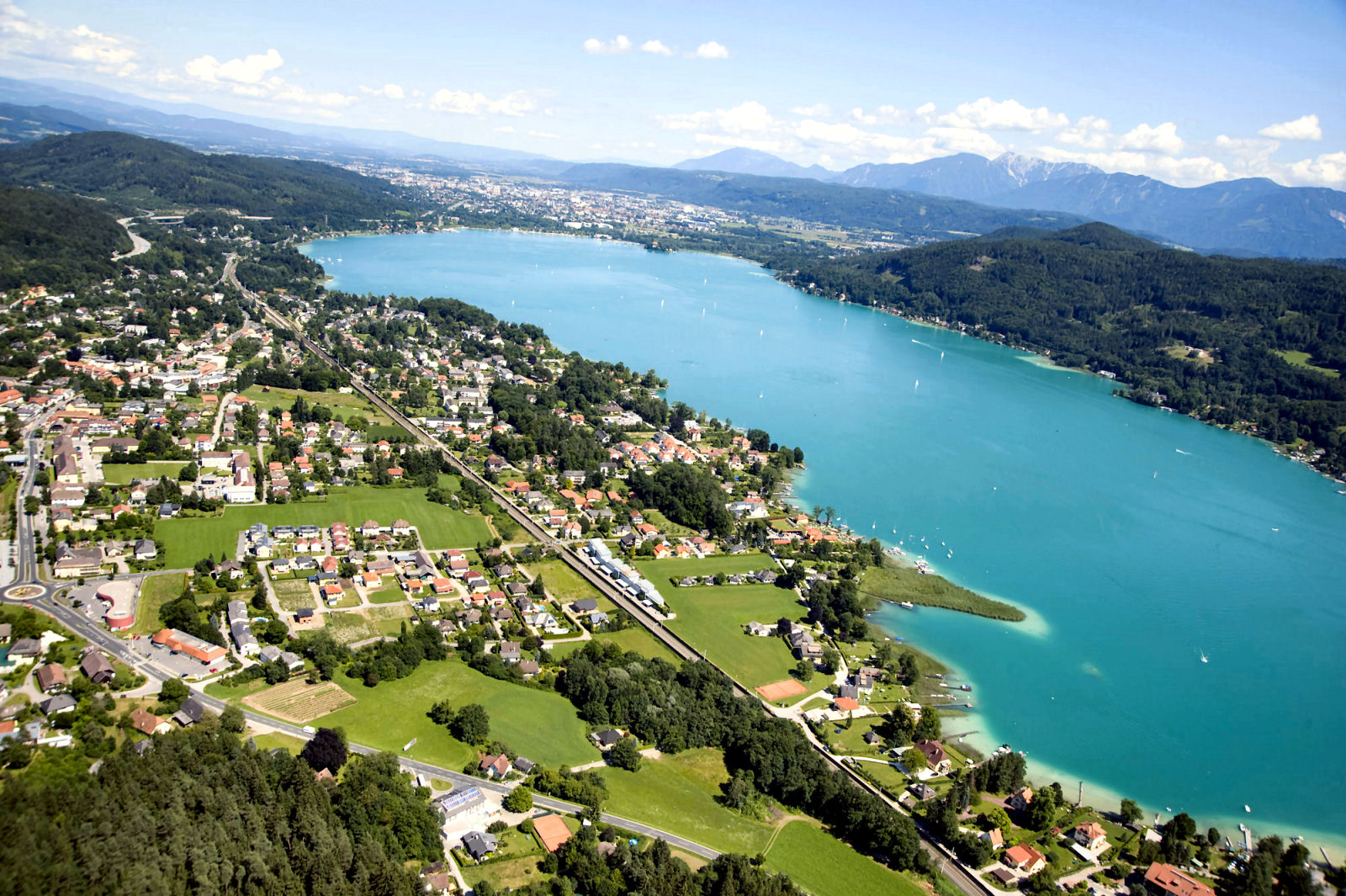Travel
Visit Austria – The places to see in Austria

There’s not a single place in Austria that’s not worth a visit. Whether for their great heritage or its stunning beauty, but a few stand out among the rest. Many of the best places to see in Austria are major tourist destinations that need at least a day to thoroughly explore, such as many of the stately Hapsburg castles of Vienna.
Similarly, ancient city neighborhoods with gorgeous Baroque facades and historic sites can keep tourists occupied for days. Moreover, giving an infinite picture of restaurants and shopping.
Austria offers various places outside of the larger cities that are rich in diverse attractions and outdoor sports. Winter visitors may test their skills on the ski routes of Austria’s Alpine slopes. While summer visitors could even find a highland lake that seems like the Mediterranean. Visitors may enjoy the picturesque pastoral environment filled with old farmhouses at any time of year.
With this list of the best places to see in Austria, you can plan your travel schedule in this lovely nation.
23 Best places to see in Austria

-
The Museums of Vienna
The Naturhistorisches Museum (Museum Of Natural history) is located in the vicinity of the city center. The Kunsthistorisches Museum (Museum of Art History) is among the best places to see in Austria. With a large Roman and Greek Treasures show, an amazing Egyptian-Oriental Collections, Collectible Coins, and a range of tales’ art.
Vienna has long been famous as a cultural mecca, with over a hundred museums. And almost as many art galleries, the majority of which are easily accessible on foot. Moreover, featuring works by Rembrandt, Michelangelo, Titian, and Raphael.
The Imperial Hofburg Palace houses some of Vienna’s main museums while leading art museums also Include Albertina, which has works by Pablo Picasso and Edvard Munch, and the Vienna Museum’s holdings, which house historic displays as well as a large art collection.
The Technical Museum, the Kriminalmuseum (Crime Museum), as well as the Museum Of Natural history, are among the best museums around the world. There is indeed a Kindermuseum (Children’s Museum) in Schönbrunn Castle, and the ZOOM Science museum, for children.
-
Salzburg’s Getreidegasse

The Getreidegasse in Salzburg is the core of the Old City, with excellent historic buildings and plenty of commerce. The Getreidegasse, located on the Salzach River’s left bank, is a World Heritage Site.
Mozart’s Birthplace, now a museum, is one of the city’s most popular tourist destinations. This region is great for photographers due to its distinctive through-houses and beautifully adorned Baroque façade.
Another must-see Old Town (Altstadt) site is St. Rupert’s Benedictine Abbey of St. Peter, which was established in the late seventh century. St. Peter’s Church, which is located next to the abbey, is well renowned for its catacombs, which were utilized in the shooting of The Soundtrack. Visitors who want to see the Hohensalzburg Fortress can use the railway from nearby.
-
The Ringstrasse, Vienna
The 5.3-kilometer Ringstrasse, located in the center of the ancient city, is home to some of Vienna’s most beautiful sights, monuments, and galleries. It was constructed in the nineteenth century to serve as a cultural center and is among the best places to see in Austria.
Tourists with limited time can make use of the Vienna Ring Tram, which can be utilized for self-guided excursions or to get from one institution to the next. Along the path, there are beautiful landscapes and parks.
Among the excellent buildings, visitors will find a range of architectural styles, notably notable Neo-Renaissance-style attractions like the Natural History Museum, the Museum of Art, as well as the State Opera. Several Modern Gothic structures (Votive Church, the Museum for Industrial Art, and the Vienna Stock Market) are also represented, as are Flemish Gothic (City Hall) and Modern Baroque (Burgtheater). The Royal Palace, the University of Vienna, and the Capitol building are among several Ringstrasse highlights.
-
Tirol Province
Tirol Province comprises the majority of Austria’s relatively small western extremity and follows the route of the Inn Valley’s River Inn. The province has borders with Germany to the north, Italy to the south, and a tiny piece of Switzerland to the northeast.
Innsbruck, the capital city, is located in this valley at the foot of the Nordkette mountainous region and is a center of historical, ecological, and cultural assets as well as a convenient spot to stay when visiting the Tirol area.
Some of Austria’s most prominent ski resorts and Alpine wonders, such as the Stubai Glacier, are located in the area around Innsbruck, where visitors may explore tunnels and caverns inside the old ice. Innsbruck’s Patscherkofel ski resort, which has hosted the Winter Olympic Games twice and also has a variety of winter sporting venues.
In the summer, visitors may swim in the neighboring lakes’ colored glacial waters, with Lake Natters and Lake Lans conveniently accessible to Innsbruck. Hiking and riding are common activities on Alpine paths such as the Zirbenweg Trail atop Patscherkofel. Climbers can practice securely at a climbing center in the adjacent hamlet of Igls.
The nearby tourist festivals include the 16th-century Schloss Ambras (Ambras Palace) and Swarovski Kristallwelten, a Swarovski crystal museum. 007 ELEMENTS in Sölden is an outstanding museum for anybody interested in the James Bond films, with numerous ski-chase scenes filmed on the neighboring slopes.
-
Vienna’s Hofburg Palace

The Imperial Hofburg Palace, the historic home of the governing Hapsburg dynasty, is one of Vienna’s most renowned tourist sites and one of the best places to see in Austria. The structure is one of the biggest in the world, displaying many architectural styles as it has been enlarged and changed by each emperor since 1275.
The palace is made up of 18 buildings spread across 59 acres, with a maximum of 2,600 rooms more than a dozen courtyards. Visitors might easily spend days touring the gardens and museums, which include the Museum Of Natural history (Naturhistorisches Museum), the Sisi Museum, and the Royal Apartments.
-
St. Stephen’s Cathedral, Vienna
Tourists interested in religious sights should not miss the majestic St. Stephen’s Cathedral (Stephansdom), an extraordinary Gothic edifice built in the 13th century. Tourists will be captivated by the unusual patterned top and its 137-meter-tall spire, and the two Heidentürme (Heathen’s Towers) externally.
The Giant’s Door, a superb instance of Late Romanesque construction, a 1640 High Altar covered in black marble, three unique chapels, and its 14th-century Catacombs are among highlights of the cathedral.
-
Historic Innsbruck
The old court palace, the Hofburg, and Maria-Theresien Strasse, where you’ll discover various 17th- and eighteenth structures, including the Rathaus (Town Hall) and the Annasäule monument (St. Anne’s Column), are one of Innsbruck’s best places to see in Austria due to its historic sites. Visitors will find various examples of beautiful Baroque buildings with intricate stucco works and other decorations throughout the Old Town region.
While being in Innsbruck, make time to ride the Nordkettenbahn, a railway that takes passengers from the city center to Hungerberg for breathtaking city views and the Alps. You may also continue to Seegrube, which has a café and observation area, as well as Karwendel, the state’s largest natural park.
-
Belvedere Schloss

Schloss Belvedere (Belvedere Palace) is one of the best places to see in Austria. It composes of 2 Baroque palaces known as Oberes (Upper) Belvedere and Unteres (Lower) Belvedere. Work on the Upper Belvedere began in 1700, and Prince Eugene used it as his own home.
The castle is especially famous for its collection of art, especially medieval art and 19th- and twentieth Austrian art, which can be seen at the Austriaische Galerie Belvedere. The Upper Belvedere was finished in 1724, and it was here that the Austrian State Treaty, which marked Austria’s freedom, was written in 1955.
-
Graz Old Town
Graz’s Old Town features some remarkable historic structures and it has been designated a UNESCO World Heritage Site since 1999. The Older Town is famous for its Baroque façade, and one of the greatest examples is the 17th-century Haus am Luegg, which features delicate ornamental stucco work as well as a galleried first floor.
Other notable constructions are the Golden age Landhaus, the Rathaus, and the Franciscan Church, which have outstanding Late Gothic features. Schlossberg hill, which dominates the old town, has a funicular that takes tourists to the 16th-century Uhrturm (Clock Tower).
Many museums may also be found in the Old Town neighborhood, such as the Mohren Apotheke’s Theriak Museum (Apothecary Museum) as well as the Stadtmuseum Graz (Graz Municipal Museum), as well as the Robert Stoltz Museum, which is devoted to the musician Robert Stoltz.
-
Vienna’s Scloss Schönbrunns
Schloss Schönbrunn (Schönbrunn Castle) is a popular Vienna attraction, a gorgeous and large palace with over 1,400 rooms and extensive groomed gardens. Construction started in the late seventeenth century and was finished in 1730, and became the royal home of Maria Theresa, only one female Hapsburg queen.
Tourists may take a tour of 40 apartments of the Renaissance palace, including the Imperial Suites in the West Wing. The parks and gardens around it are as beautiful, with statues, fountains, and the spectacular Palm House, a Victorian-era conservatory.
-
The Wachau Valley

The Wachau Valley, located all along the Danube River near Melk and Krems, is tranquil and stunningly beautiful, with little medieval villages and hidden gems. Because of its relative isolation and magnificent natural settings, this was a favorite location for monasteries during the Renaissance, having and over 30 at one point.
The Baroque Servite convent of Maria Langegg in Aggsbach-Dorf, which now houses the Wallfahrtsmuseum, is among the finest and best places to see in Austria. The affluent and aristocratic families picked this valley for their vacation mansions for the same reason. Schloss Schallaburg, situated just five kilometers from Melk, is a lovely Romanesque Renaissance palace with a Gothic church and stunning grounds.
From its steep perch just above the river, the remains of Medieval Aggstein Castle (Burgruine Aggstein) provide stunning views, but from here, you could also see the village where the famed Paleolithic Venus of Willendorf was discovered. Visitors should also visit Dürnstein, which is regarded and as one of Austria’s most scenic cities.
-
Melk Abbey
Melk Abbey is famous as one of Europe’s finest monasteries, both in terms of design and content. The construction is a vast palace complex with several courtyards and a magnificent Baroque church. The Abbey church has a carefully carved high altar and pulpit, as well as a painted roof, among its numerous ornaments.
Visitors should take a walk out onto the balcony, which overlooks the Wachau Valley and is an ideal location for shooting the town below. The monastery’s greatest wonder is its library, which has a main hall with 16,000 books and a dozen other chambers with an extra 100,000 books. The main library hall, which has ceiling paintings by Paul Troger and a spiral staircase leading to the adjacent rooms, is available to the public. Umberto Eco found inspiration in this gorgeous setting when writing The Way of the Rose.
Take a little time to explore Melk’s Old Town, which is located just underneath the Abbey. The Rathausplatz (Town Hall Plaza) has the Lebzelterhaus (Itinerant Home), which has painted glass, and the Town Hall, which exhibits the city family crest. The Hauptplatz (Main Square) is yet another magnificent location near ancient structures such as the Haus am Stein and the Altes Posthaus.
-
Hallstätter See
The Hallstätter See is a beautiful alpine lake in Austria’s Salzkammergut area. This tranquil glacial lake is 8.5 kilometers long and barely two kilometers broad at its widest point, with charming towns dotting the coast.
A no-motor regulation assures that everyone’s time on the lake is tranquil, and guests may simply rent a rowboat or pedal boat to explore and enjoy the breathtaking mountain landscape.
Hallstatt, located a little over an hour from Salzburg, is one of the most picturesque communities on the lake. The town has a famous name after a local salt mine, and its center Marktplatz (Market Square) is a nice site to dine and photograph the historic residences. Tourists may also explore Hallstatt Salt World, which is close to Salzburg (Salt Mountain) and is readily accessible by railway or cable car.
-
Linz
Linz, the country’s capital of Lower Austria, is located on either side of the Danube River, with the majority of its old town sites on the south bank. The historic town’s core is Landstrasse, which is home to stunning Baroque buildings as well as many exquisite stores and galleries. Hauptplatz, a lovely market plaza, and pedestrian area are located in the heart of the city.
Linz Schloss (Linz Castle), perched on a hill near to the old town, is a fortification that was initially erected in the ninth century and has been rebuilt and modified throughout the millennia. It now contains an impressive museum (the Schlossmuseum), with exhibits ranging from prehistoric and Roman antiquities to medieval weaponry and armor and a variety of artwork.
Beautiful Botanical Garden just outside of the city center offers native Alpine wildflowers, an enclosed rose garden, a cacti house, and tropical plants in a tropic residence.
-
Lake Wörthersee

Lake Wörthersee (also known as Lake Wörth) is the biggest lake in the Carinthia province and the best place to see in Austria. During the hottest months, the pure glacial water may reach temperatures of over 80 degrees F. While in the winter it is more like a massive ice rink.
Including its waterside eateries and laid-back attitude, it is a popular area for swimming. And sailing during the summertime has an almost Mediterranean vibe.
Visitors have more recreational possibilities because they have a surrounding of mountains on any side. There are several hiking routes of varying complexity. As well as cycling tracks that are ideal for exploring the lakeshore and tiny lakeside settlements. There are also several fitness courses available, as well as the facilities utilized by the annual Kärnten Ironman Austria.
Klagenfurt, the province capital, is located on the lake’s eastern shore and is a good site to begin your stay. The city is famous for its Renaissance gardens in the Old Town, the famed Lindwurm Fountain. And the magnificent Klagenfurt Cathedral (Dom zu Klagenfurt), which contains the Gurk Diocesan Museum.
Klagenfurt is also home to the Benedictine farmer’s market, which attracts farmers from Austria, Italy, and Slovenia. Further, making it a true multi-cultural experience.
-
Salzburg, Hohensalzburg Castle
The eleventh stronghold of Hohensalzburg stands vigil over the city of Salzburg from the summit of Mönchsberg. The Prince’s Apartments, and other portions of the ornately designed Late Gothic palace. Maybe toured at Hohensalzburg Castle, which can be accessed on foot or by lift.
There are also two great military-theme museums nearby, such as the Rainer Regiment Museum. And the Castle Museum, both of which include historic weaponry and other items.
-
Schlossberg of Graz
The Schlossberg, at a height of 473 meters, overlooks Graz’s Old Town and provides superb views of the historic quarter. The 1561 Uhrturm (Clock Tower), which was once the location of defenses. It is also one of the intact structures, along with the Glockenturm (Belfry), which houses bell locally known as Liesl.
There are additional family-friendly activities on the Schlossberg. Such as micro, an open-air theatre, and a café with wonderful views. This location is accessible through a three-minute train ride or even a 20-minute walk.
-
Lake Constance
The ethereal splendor of Lake Constance, one of the best places to see in Austria, will take your breath away. The lake is on the borders of 3 nations: Austria, Germany, and Switzerland. It is not only Europe’s third-biggest lake, but it is also one of the most scenic locations on the continent. A day picnic may be enjoyed while resting and taking in the gorgeous scenery. This location becomes well-known for its hot baths throughout the winter. You may also take a boat out on the lake. So, if you’re thinking about what to do in Austria, this should be the first destination that comes to mind.
Donau Auen National Park
Donau Auen National Park, established in 1996, is home to a diverse range of animal and plant species. The park has an area of 93 square kilometers and offers activities like bird viewing, kayaking, walking, and mountain riding. The tranquil lake during the national park is inviting and visually pleasing. In this lovely national park, you may discover the finest of Austria.
-
Gesause National Park
Do you like to climb rocks? If so, you should go to the Gesause National Park, which has six mountains that are higher than 2000 meters. In the winter, it transforms into a skier’s paradise, with skiing slopes. Throughout terms of hiking, there are more than 100 kilometers of routes in the park. The breathtaking panorama dazzles the senses. Rafting on the Enns River, which runs through the park, is a popular activity.
-
Hohe Tauern National Park
The National Park Hohe Tauren is one of the best places to see in Austria. Since it is the country’s oldest and biggest national park. This national park is a region of Australia’s superlatives, containing the country’s biggest mountains, glaciers, and forests. Discover gorgeous and unusual animal species. You may either explore the park on your own or join a park ranger-led tour.
-
Seewinkel National Park
Seewinkel National Park showcases the finest of Austria and its natural beauty. Moreover, Sewinkel, situated between both the Alps and the Little Hungarian Plain. It is home to a diverse range of species of plants and animals, as well as sceneries. On your birding trip, you will be able to see 340 different bird species.
-
Schonbrunn Palace
Where should you go to Austria? If you like palaces and such, here is the place to be. It is also one of the best places to see in Austria. Because the palace is a UNESCO World Heritage site, it’s on your bucket list. As you enter the palace, you will sense the presence of royalty. The castle also has pleasant attractions such as the Privy Garden, which has a lot of beautiful flora.













